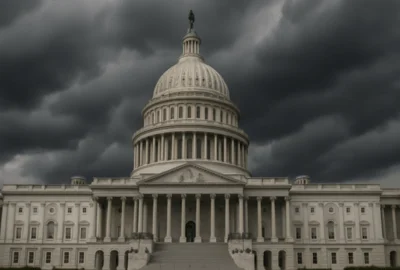Head Start is a vital support for parents like Javona Brownlee, whose three children all attended Head Start programs. Javona’s two youngest children attended preschool through Head Start while the family lived in a homeless shelter after escaping from an abusive partner. Participating in Head Start allowed them to receive the developmental and academic support they needed and enabled Javona to get back on her feet and start her own cleaning business. She shared, “Those doors were able to open for me because my children had access to Head Start; it had a huge impact on my family and allowed me to become self-sufficient.”
To date, Head Start has served nearly 40 million children, including Javona’s. In fiscal year 2023, the program was funded to serve more than 833,000 children and pregnant people living in poverty in centers and home-based settings in all 50 states, the District of Columbia, and six territories. Head Start plays a critical role in supporting the healthy development of children living in poverty and in helping parents seek employment and educational opportunities that afford them a better shot at gaining a foothold in America’s middle class.
Despite strong evidence that the program has helped boost educational attainment and fight intergenerational poverty, Project 2025—a far-right authoritarian playbook that would upend the 250-year-old system of checks and balances on which American government is built—proposes eliminating Head Start in its entirety. Enacting Project 2025’s plan to eliminate Head Start would vastly restrict the number of available child care slots, dramatically increase child care costs for families living in poverty, undermine economic growth, and exacerbate inequality.
At a time when a majority of Americans already live in child care deserts, the sector cannot afford to lose hundreds of thousands of child care slots and the critical infrastructure provided by Head Start. That is especially true in rural communities, where people are more likely to live in child care deserts and therefore would suffer disproportionately from the elimination of Head Start.
A previous 2018 analysis from the Center for American Progress found that Head Start provides a critical supply of rural child care. In the ten states surveyed, rural Head Start programs represented 22 percent of the overall child care supply. For instance, in Georgia, Head Start made up more than one-quarter of the center-based child care programs in rural counties and nearly half of the center-based programs in frontier counties. And in Michigan, Head Start made up more than one-third of the center-based child care programs and more than 40 percent of the center-based programs in frontier counties. Without Head Start, the percentage of the population living in child care deserts would increase.
Eliminating Head Start would also strip away comprehensive services that hundreds of thousands of low-income families enrolled currently receive. While reflecting on how Head Start helped her family, Javona said: “[Without it] I never would have been able to work.” Eliminating Head Start would deprive families of opportunities to pursue entrepreneurial endeavors, develop professionally, obtain additional educational certifications and degrees. Moreover, children would lose access to emotional, social health nutritional educational supports necessary succeed once enter kindergarten.
Amid rising cost private market low-income dependent free services offered wouldn’t afford without rendering unable work forced find potentially unsafe poor-quality arrangements New data Child Care Aware America found national average price $11 582 unattainable qualify unaffordable most American For families poverty level income eligibility threshold represents percent income financial burden five times greater threshold government said affordable Although another federal program available help access services Child Care Development Block Grant CCDBG capacity absorb strain caused affect relying could increase waitlists seeking subsidies affect limited supply slots
Significantly cutting supply ripple effects entire economy Roughly percent under age United States available workforce meaning reliable affordable infant toddler well-being Lack currently costs U.S economy billion every year lost earnings productivity tax revenue only increase Additionally progress states localities universal pre-K District Columbia Florida Iowa Oklahoma West Virginia top states pre-K each integrated state instance West Virginia pre-K available classrooms school larger share funding reach standpoint particularly harmful Latino Tribal being served American Indian Alaska Native agricultural dependent Migrant Seasonal foster experiencing homelessness categorically eligible disabilities must fill least enrollment represent vulnerable deprive opportunities nurture healthy development
Proposals eliminate cut funding federal early learning detrimental country’s unpopular public Investing broad support across political spectrum poll First Five Years Fund found voters believe improving quality making good investment taxpayer money Moreover business owners agree businesses stable employees improved affordable high-quality As Javona said lifeline “It’s want necessity policymakers should looking expand investments ensure current workforce future today’s young lead dependent accessible system
*Author note story quotes provided Center via video call June





